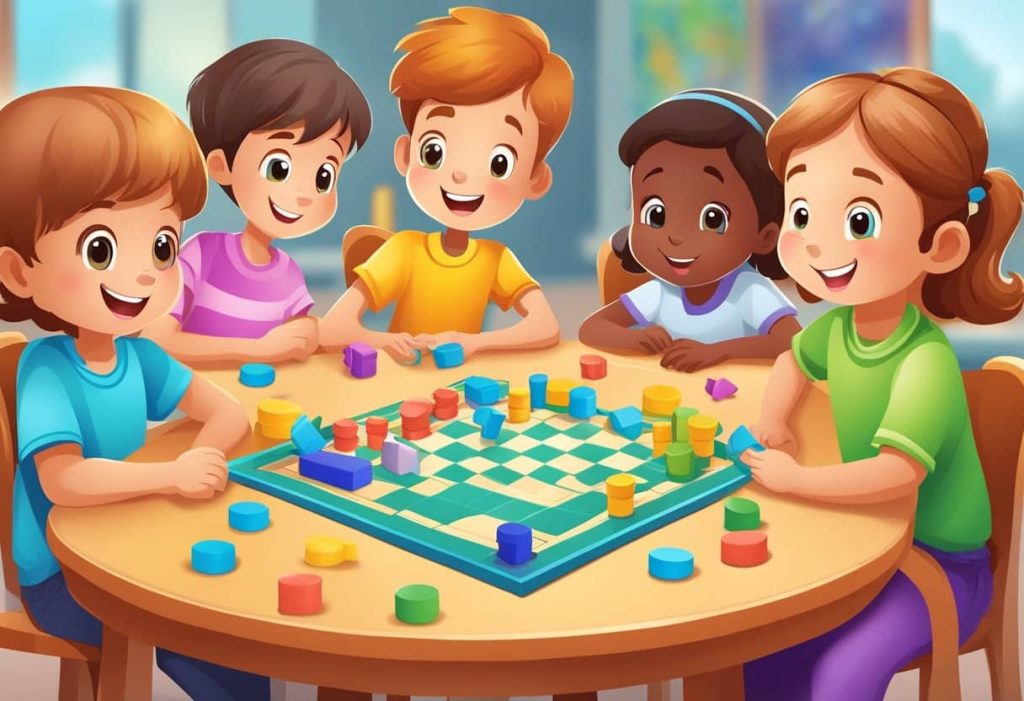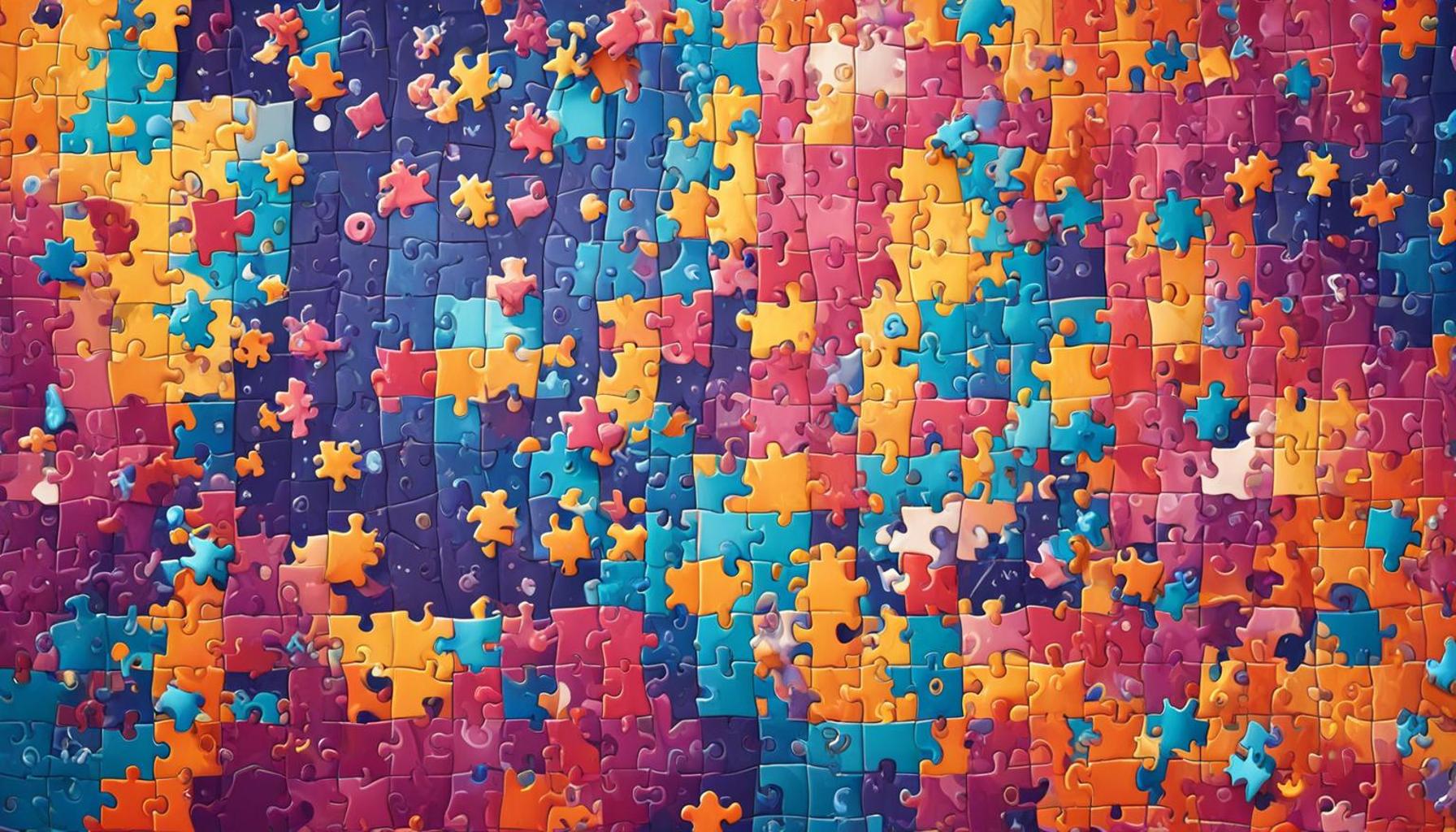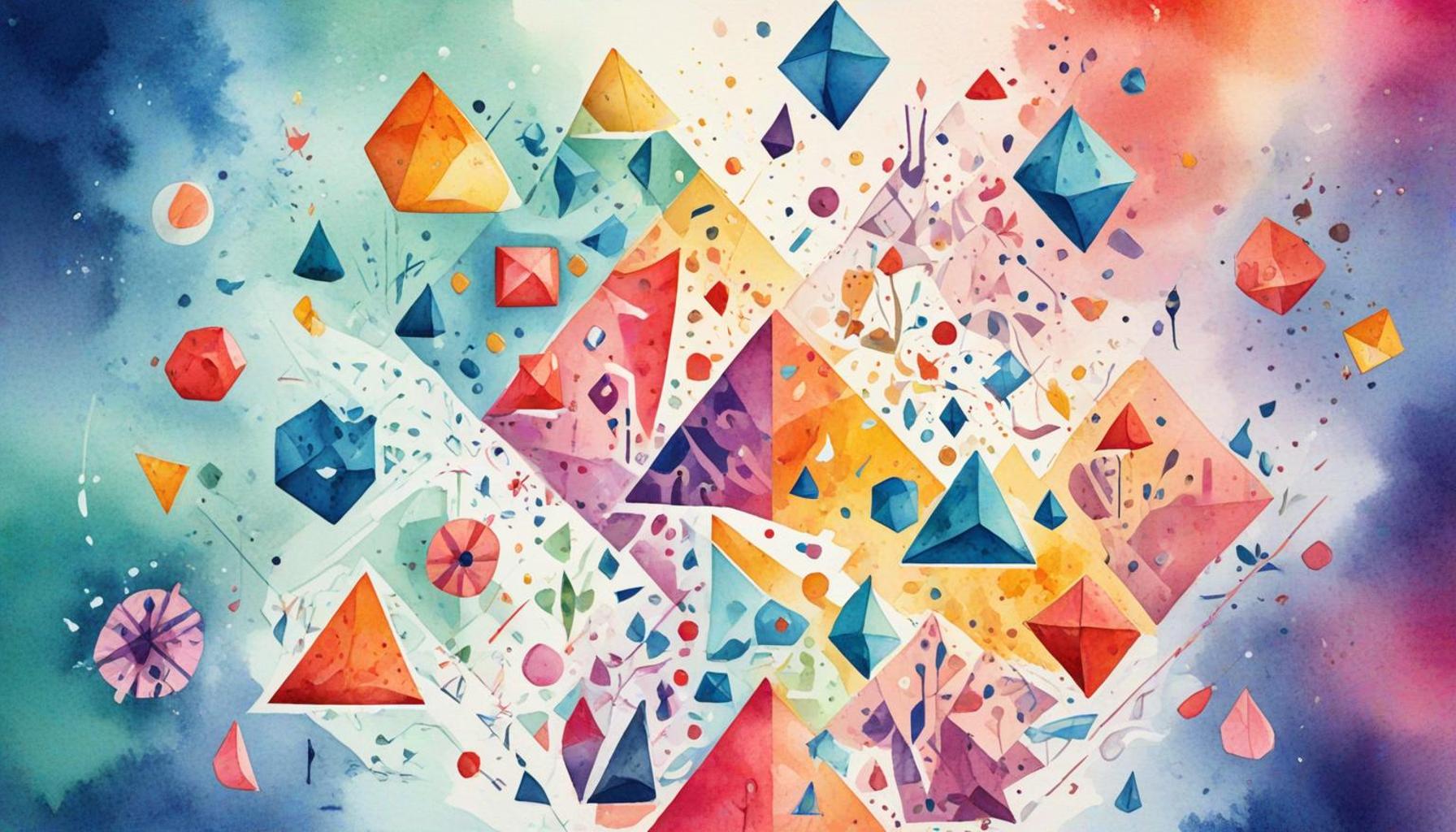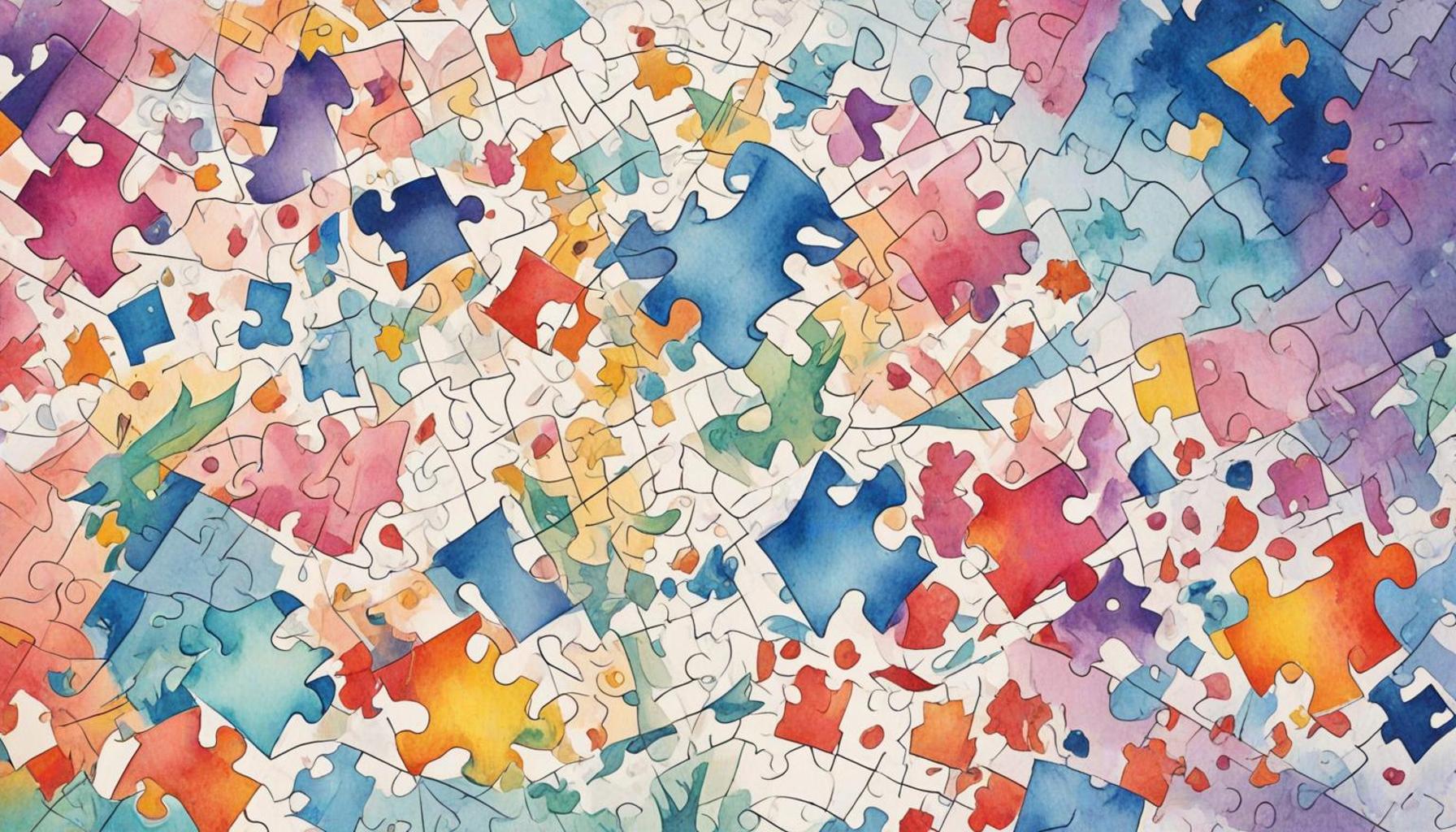The relationship between pattern recognition and creativity in building games

Understanding the Dynamics of Pattern Recognition in Game Development
In the expansive realm of game development, pattern recognition serves as a cornerstone of innovation and creativity. Game developers meticulously observe various elements within their projects, from player interactions to environmental cues and core gameplay mechanics. By recognizing and analyzing these patterns, they can craft captivating and immersive experiences that resonate with players.
Player Behavior: One of the most crucial aspects of pattern recognition in game development is the understanding of player behavior. By studying trends in how players engage with their games, developers can make informed design choices that enhance user experience. For instance, analytics tools allow developers to track where players succeed or struggle within a game, guiding adjustments in difficulty and game flow. A classic example can be found in popular battle royale games, where developers frequently update features based on how players typically engage with weapons or map layouts. Recognizing these behavioral patterns can transform how players perceive and interact with the game world.
Creative Solutions: Furthermore, recognizing patterns can lead to unprecedented creative solutions for in-game challenges. Developers often encounter recurring issues, such as balancing game difficulty or managing resource allocation within the game. By identifying these repeated challenges, they can employ innovative strategies that push the boundaries of traditional gameplay. For example, the introduction of dynamic difficulty adjustment in certain games offers players a personalized experience, tailoring challenges according to their skill levels, thus creating a more engaging environment.
Visual Design: In addition to gameplay mechanics, pattern recognition significantly influences the visual aesthetics of games. Developers utilize patterns in textures, colors, and environmental design to create visually appealing and coherent worlds. A good illustration of this is in the design of Nigerian-developed games that incorporate cultural motifs, such as traditional fabrics or landscapes, creating a unique identity while appealing to both local and international markets. By understanding the visual preferences of their target audiences, developers can enhance engagement through strategic visual design choices.
For aspiring game developers in Nigeria, the synergy between creativity and pattern recognition can unveil transformative opportunities. By integrating local narratives and cultural heritage into their designs, Nigerian developers can initiate a dialogue with global audiences. Embracing these concepts not only cultivates technical skills but also opens doors to unprecedented creative expression.

As we continue to delve into this fascinating exploration, we will uncover the ways in which leveraging pattern recognition significantly enhances the creative potential in game development. Through compelling examples and practical case studies, we aim to illuminate the crucial role this relationship plays in propelling the gaming industry forward, especially within the vibrant context of Nigeria.
ADDITIONAL INSIGHTS: Expand your understanding here
Exploring the Intersection of Pattern Recognition and Creativity in Game Design
As we navigate deeper into the mechanics of game design, pattern recognition reveals itself as a powerful tool that not only enhances the effectiveness of a game’s mechanics but also sparks the flames of creativity within developers. From the initial concept phase to the final production, the ability to identify patterns in gameplay, design, and player interaction directly impacts the overall success of a game.
Insights from Analytics: Diving into analytics, developers can harvest valuable insights that shape their creative endeavors. By leveraging player data, they can uncover underlying trends and behaviors that inform design decisions. For instance, game analytics often highlight which elements captivate players’ attention the most. This understanding leads developers to explore innovative concepts, enhancing features that promote engagement or redesigning aspects that fall flat. Studies suggest that around 70% of players prefer games that evolve based on user interaction, a fact that underscores how critical pattern recognition is in fostering creativity in game development.
This relationship is particularly evident in the realm of user-generated content. Games like “Minecraft” showcase how player feedback on game mechanics leads to creative expansions and modifications. As players recognize gameplay patterns, they generate new experiences that inspire developers to incorporate community suggestions into future updates. This reciprocal relationship creates an engaging ecosystem where creativity flourishes through shared vision.
Cultural Relevance in Game Design: In a rapidly globalizing world, cultural representation becomes increasingly critical in the gaming industry. Nigerian game developers can harness pattern recognition to celebrate local narratives, folktales, and art forms, bridging the gap between traditional storytelling and digital gaming. Understanding patterns in cultural preferences not only helps in crafting unique stories but also ensures that the games resonate deeply with local and global audiences alike. For example, games that incorporate the vibrant aesthetics of Nigeria’s landscapes or folklore can create richer experiences, thus enhancing creativity in game narratives and character development.
The Role of Playtesting: Playtesting is another area where pattern recognition and creativity converge. By observing players during testing phases, developers can identify behavioral patterns and responses to specific game elements. This feedback loop is integral to the iterative design process, encouraging a culture of continuous improvement and innovation. Notable examples include the critically acclaimed game “Dark Souls,” which utilized player feedback to enhance its notoriously challenging gameplay, solidifying its status as a classic through iterative refinements based on player interactions.
As the gaming landscape evolves, the correlation between pattern recognition and creativity becomes evident. Both elements energize one another, resulting in games that captivate and inspire. For developers, mastering the art of recognizing patterns will not only improve gameplay experiences but also expand the horizons of what is creatively possible. As we continue exploring this intricate relationship, the examples and case studies illustrated will provide further understanding of how recognizing these dynamics helps transform ideas into phenomenal gaming experiences.
| Category | Description |
|---|---|
| Pattern Recognition | The cognitive ability to identify and interpret patterns in data. |
| Creativity | The capacity to generate original ideas and solutions, essential in game design. |
| Innovation in Gameplay | Using recognized patterns fosters new gameplay mechanics and experiences. |
| Player Engagement | Understanding patterns leads to more engaging and immersive gameplay, enhancing user retention. |
The relationship between pattern recognition and creativity is a powerful one, particularly in game development. As developers explore how players recognize and react to in-game patterns, they can leverage these insights for enhanced gameplay experience. Pattern recognition is not merely about identifying trends; it enables developers to anticipate players’ needs and preferences, facilitating the creation of more intuitive game designs.Moreover, this recognition process is crucial for fostering creativity. It allows creators to think outside the box, generating innovative solutions that resonate with the player’s cognitive responses. For example, understanding recurring elements in a game can spark new narratives and mechanics that feel fresh yet familiar, enticing players to explore further.Furthermore, this synergy drives player engagement. When game mechanics are rooted in player-friendly patterns, they naturally craft an environment that feels rewarding and enjoyable, thus enhancing user retention. Through a deeper understanding of the interplay between pattern recognition and creativity, developers are empowered to craft experiences that captivate and challenge players in exhilarating ways.
ADDITIONAL INSIGHTS: Expand your understanding here
The Feedback Loop: Enhancing Creativity Through Player Interaction
Another fascinating dimension of the relationship between pattern recognition and creativity in game design lies in the feedback loops created by player interaction. When developers embrace the insights gained from observing player behaviors, they can refine their creative processes to better cater to player preferences. This interaction serves not only to enhance gameplay but to also foster innovation by encouraging developers to experiment with new ideas grounded in the patterns that emerge during play.
Dynamic Game Mechanics: One prime example of this approach is seen in the successful adaptation of game mechanics in titles like “Fortnite.” The game developers monitor player interactions meticulously, noting which features garner the most engagement and which fall short. By recognizing these patterns, the team can continuously innovate, introducing new game modes or events that align with player interests and creativity. This adaptability helps retain the player base while simultaneously inspiring developers to think outside the box, crafting unique experiences that keep players coming back for more.
Collaborative Design Processes: Collaborative design practices also benefit from this relationship. Some game studios actively invite players to partake in the creative process, allowing them to share ideas and create content. Such initiatives have led to successful games like “LittleBigPlanet,” where players can design and share their own levels. The recognition of player patterns—what type of levels or challenges they create—fuels further creativity, resulting in a vibrant community and ongoing content evolution. In Nigeria, similar practices could be adopted, allowing local gamers to address the cultural context within game design, further broadening the creative scope of the industry.
The Influence of Emerging Technologies: The advent of technologies such as artificial intelligence and machine learning is revolutionizing how developers recognize patterns in player data, opening new doors for creativity. AI-driven analytics can process vast amounts of data to uncover insights about player behavior that humans might miss. For instance, AI can identify subtle patterns in player decisions or preferences, guiding developers to tailor experiences uniquely suited to different demographics. As Nigerian developers harness these technologies, they can create games that transcend traditional boundaries, intertwining local narratives with globally recognized gaming trends.
The Role of Visual Aesthetics: Additionally, the visual aesthetics of games play a pivotal role in pattern recognition and creativity. Recognizing what visual components resonate with players helps developers incorporate stunning art styles or unique character designs that spark interest. For instance, the use of vivid colors and culturally relevant motifs can create an engaging atmosphere that appeals to Nigerian audiences. Games like “Ori and the Blind Forest” showcase how visual storytelling can amplify gameplay experiences, contributing to a deeper emotional connection that goes beyond mere mechanics.
This intersection creates a vibrant ecosystem where creative ideas flourish from continual interaction and recognition of player patterns. By developing a keen awareness of these patterns, game designers can push the envelope, crafting distinctive and immersive gaming experiences that resonate with both local and global players. As this relationship evolves, the potential for groundbreaking innovation within the gaming landscape remains boundless, inviting further exploration and inquiry into how pattern recognition can serve as a catalyst for creativity in game development.
YOU MAY ALSO LIKE: Read read another article
Conclusion: Unleashing Creativity Through Pattern Recognition
In conclusion, the intricate relationship between pattern recognition and creativity in game development is a dynamic force driving innovation and player engagement. As developers increasingly leverage player feedback and behavioral patterns, they unlock new avenues for creativity that enhance the gaming experience. This symbiotic relationship does not only allow programmers to modify existing gameplay but also inspires groundbreaking game mechanics and narratives tailored to diverse audiences, particularly in a context as rich as Nigeria’s.
Moreover, the integration of advanced technologies like AI and machine learning further amplifies this connection, aiding developers in discerning complex player preferences. By adopting a more data-informed approach, they can innovatively craft experiences that bridge local cultural narratives with global gaming trends. This forward-thinking mindset is essential for nurturing a thriving gaming community while fostering local talents who can articulate unique stories through gameplay.
Additionally, the visual artistry that underpins game design plays a pivotal role in engaging players, as it allows developers to harness insights about aesthetics that resonate on a cultural level. As designers continue to recognize and implement visual patterns that appeal to diverse demographics, the capacity for creative expression within the gaming industry expands exponentially.
Ultimately, as game designers embrace the art of recognizing patterns—be they behavioral, cultural, or visual—they open the door to a world where creativity flourishes. The ongoing exploration of this relationship promises endless opportunities for innovation, inviting both seasoned developers and aspiring creators to shape the future of gaming in ways previously unimagined.


